The Black Valley-A Place of Astonishing Beauty
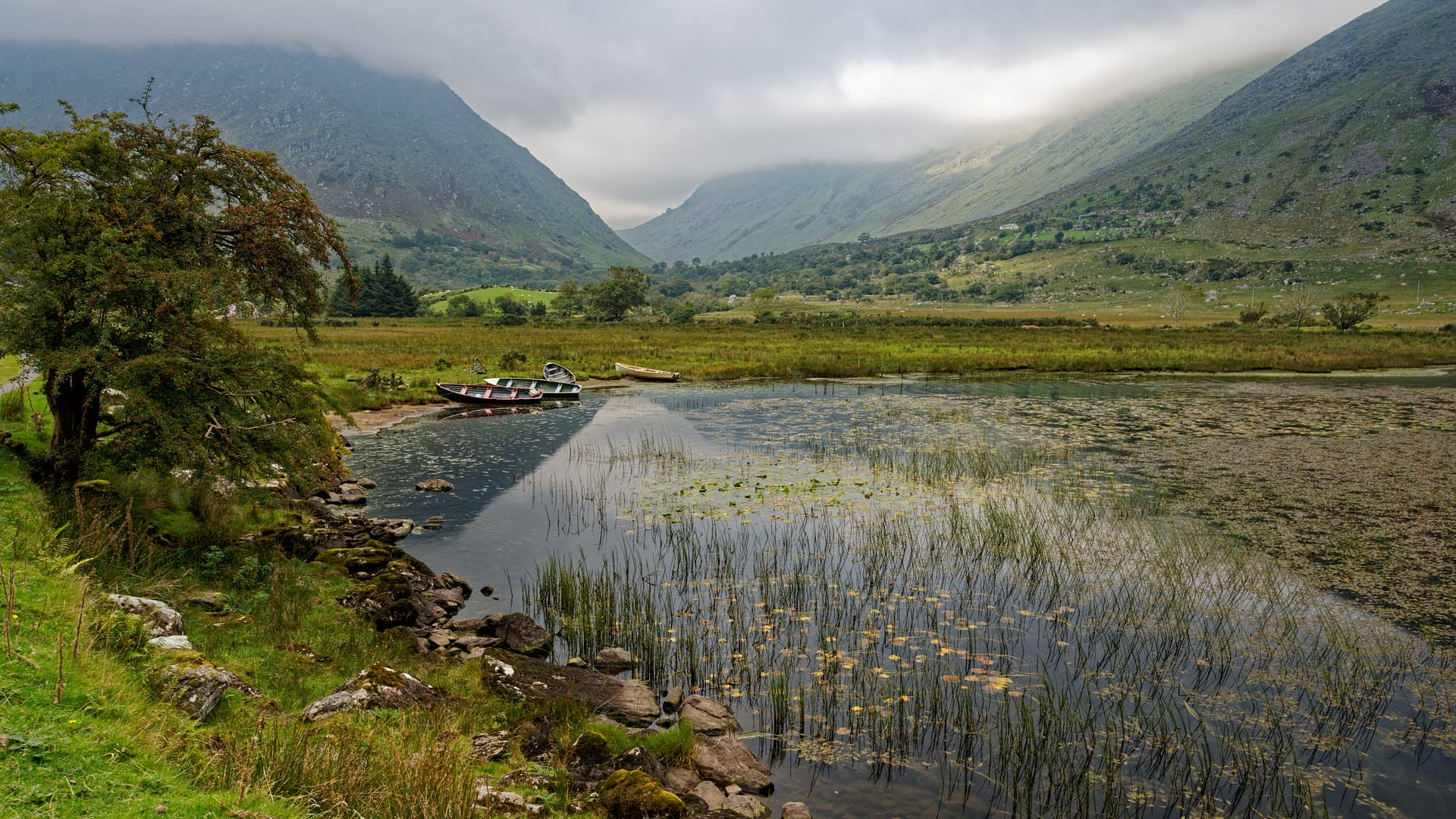
The Black Valley is a very special place in County Kerry. Its beauty and remoteness will fill your heart with joy, and its peace will soothe your soul.
Only a few farm families make their home in this valley. Which means that you can drive, walk or cycle through it with the strong possibility that you will not see anyone else along the way. What you will see is woodlands, rocky hillsides, wildflowers, and tall mountain peaks. In the center of the valley the clear, swift-moving Gearhameen River flows into Cummeenduff Lake. Overhead are the ever-changing Irish skies, covered alternately with clouds, mist, rain and sun. (Often all at once!)
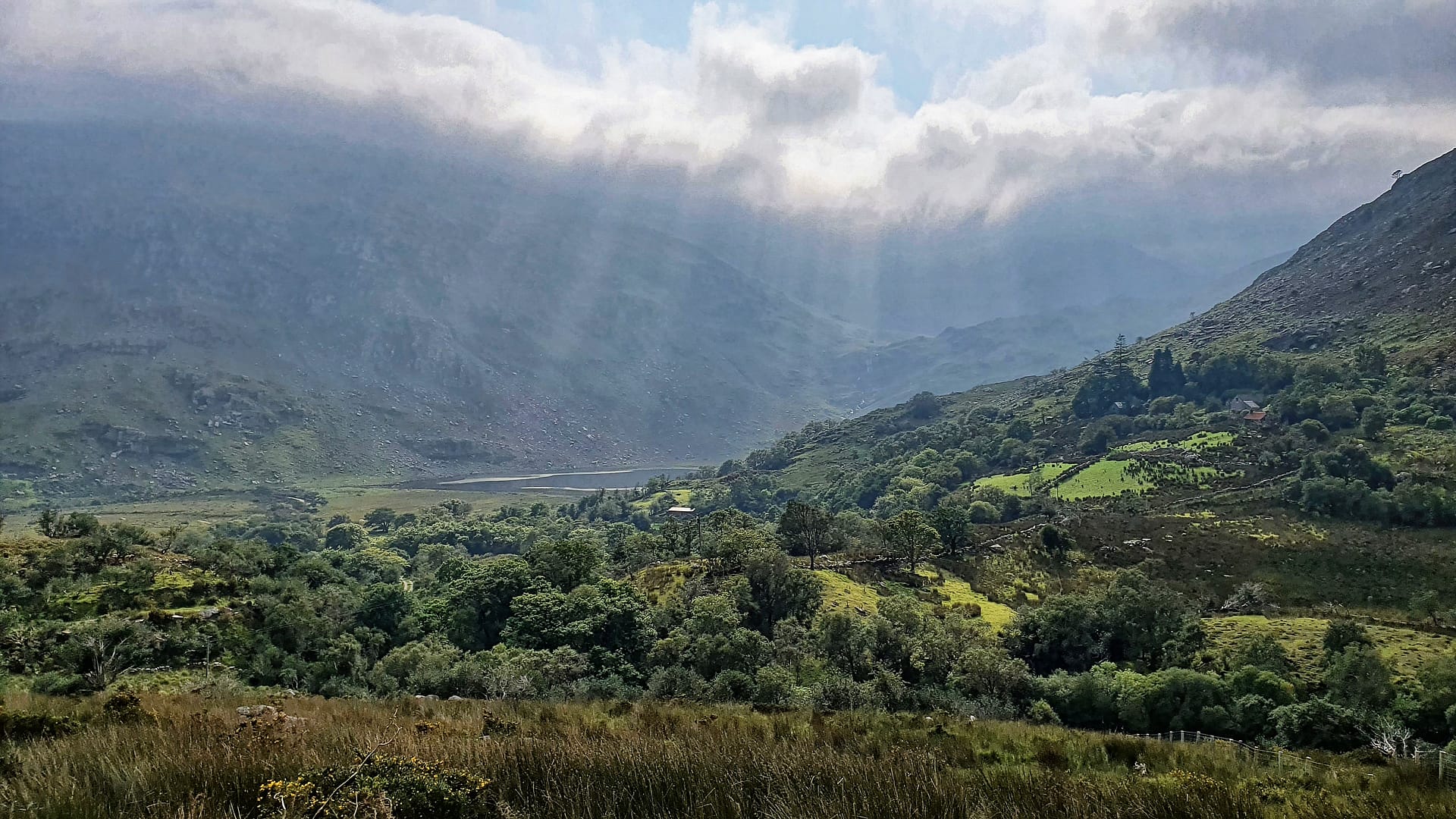
At the eastern entrance to the valley is the Black Valley National School, whose two teachers provide an education for local children through the sixth grade. Just a few miles to the west is the Black Valley Youth Hostel, which provides sleeping and cooking facilities for travelers to the area. Otherwise there is no development.
Due to its remoteness, the valley is famous for being the last place in Ireland to receive electricity. (In 1979!) It got a telephone landline in 2007, but it still does not have broadband yet. (So do not expect your cellphone to function while you are exploring the area.)
Where the Black Valley Is Located
The valley is located in the interior of County Kerry’s Iveragh Peninsula. Also called ‘Cummeenduff’ (from the Irish ‘Com Uí Dhuibh’ for Black Glen), the valley begins just east of Killarney National Park‘s western border. To the northeast is the Gap of Dunloe and to the southeast is Moll’s Gap. The MacGillycuddy’s Reeks mountain range–home to Carrauntoohil, Ireland’s tallest mountain–forms the valley’s northern border.
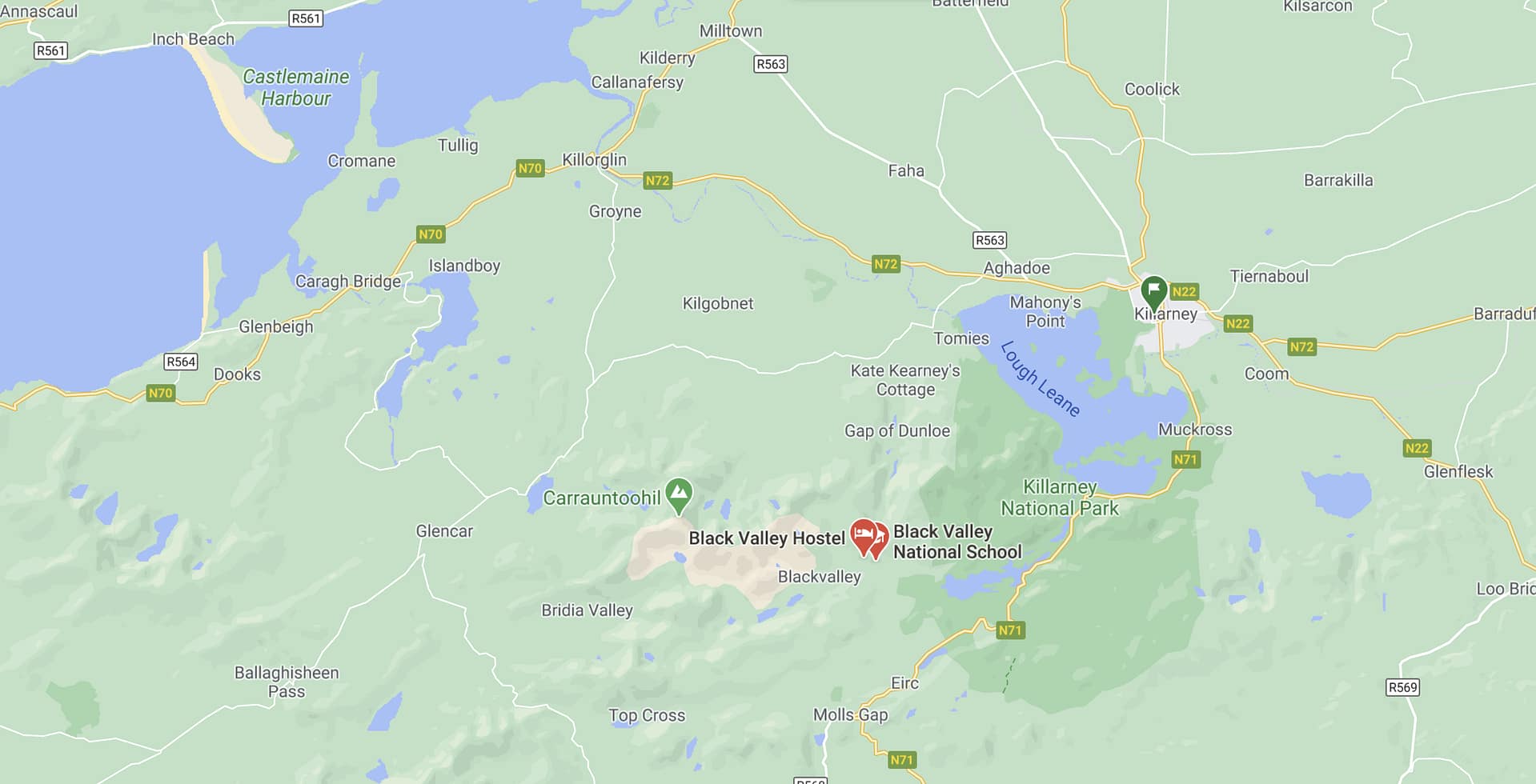
On the south side of Cummeenduff Lake is a narrow, one-lane country road. North of the lake is a segment of the Kerry Way hiking trail, which consists of a 133 mile (214 km) long circular trail beginning and ending in Killarney.
Our Hike Through the Black Valley
My husband, Gerhard, and I decided to hike through the Black Valley in late September. The day began a bit cloudy, with clouds and mist covering the mountain peaks. By mid-afternoon, however, the skies had cleared and the sun shone brightly down upon us.
The map below shows the route we took around the valley.
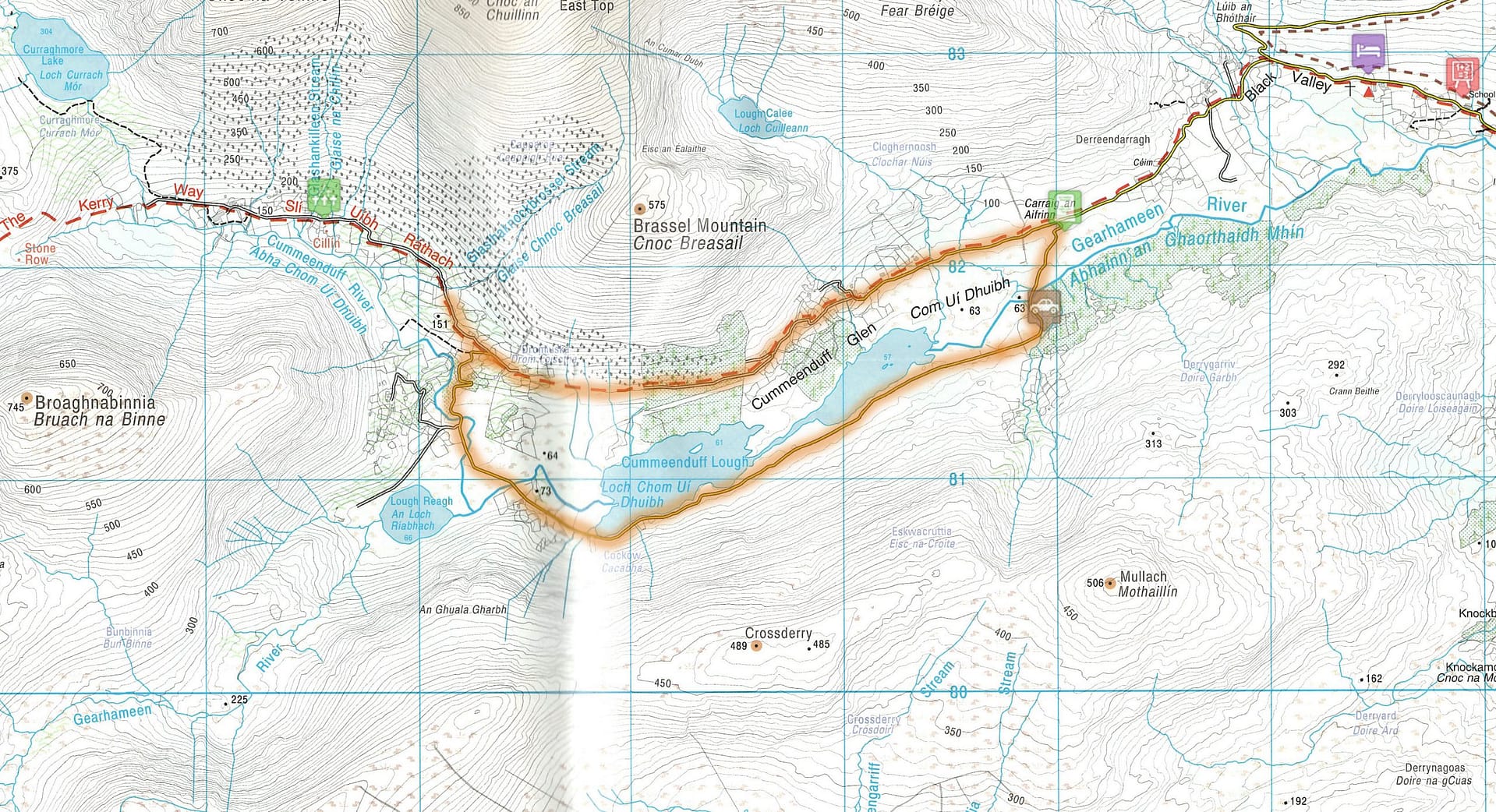
We parked our car at the eastern entrance to the valley at the southern side of the river. First we headed west, walking along the narrow road to the end of the lake. Next we turned north a bit until we came to the markers indicating the Kerry Way trail along the north side of the lake. Finally, we headed east, following the trail through a farmer’s field and a woodland. At the end of the lake (see the green memorial marker), we turned south again and walked back to our car. The whole trip took us over four hours and added up to 9 kilometers (almost 6 miles).
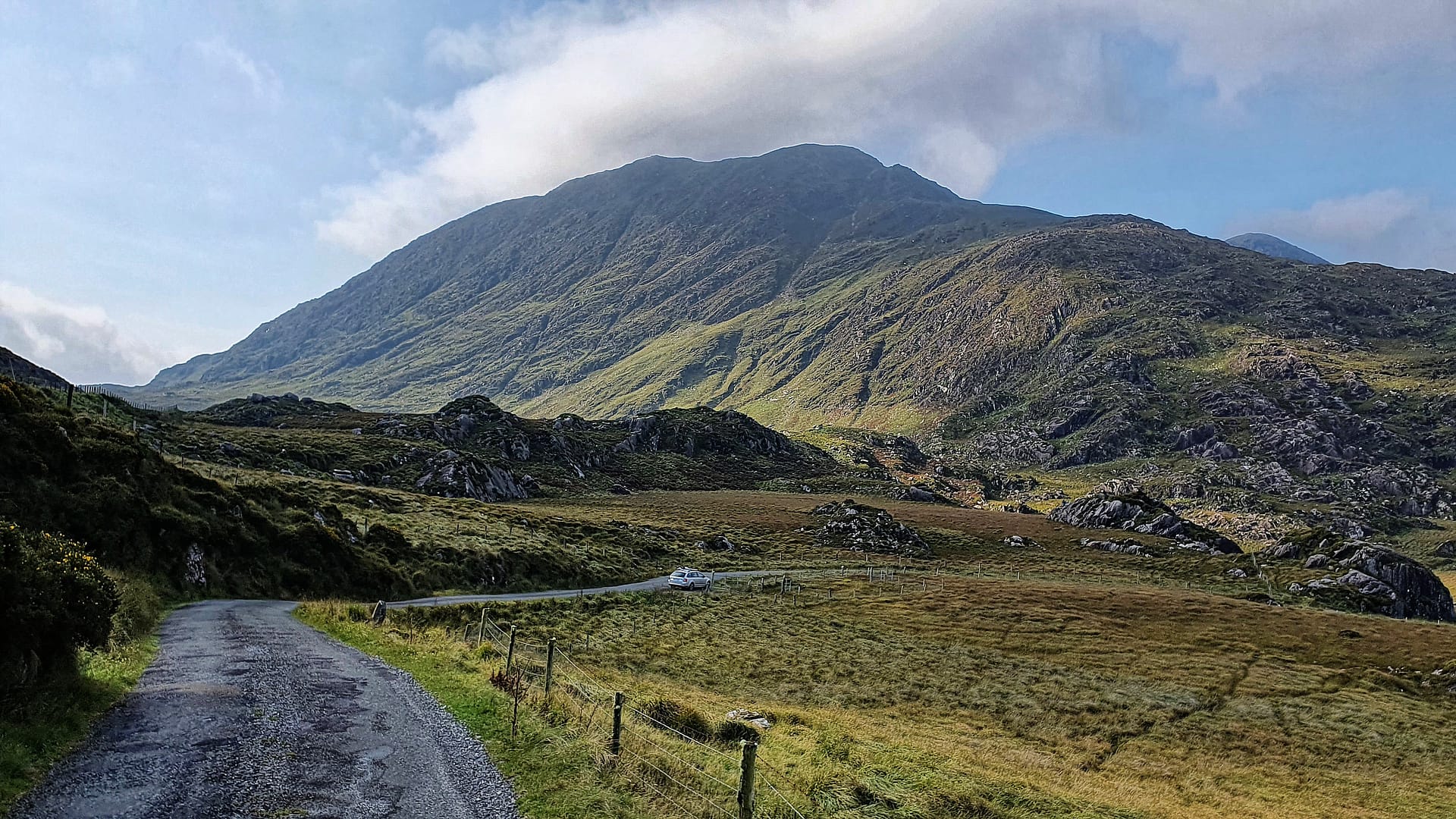
These two pictures show the countryside we drove through on our way into the valley.
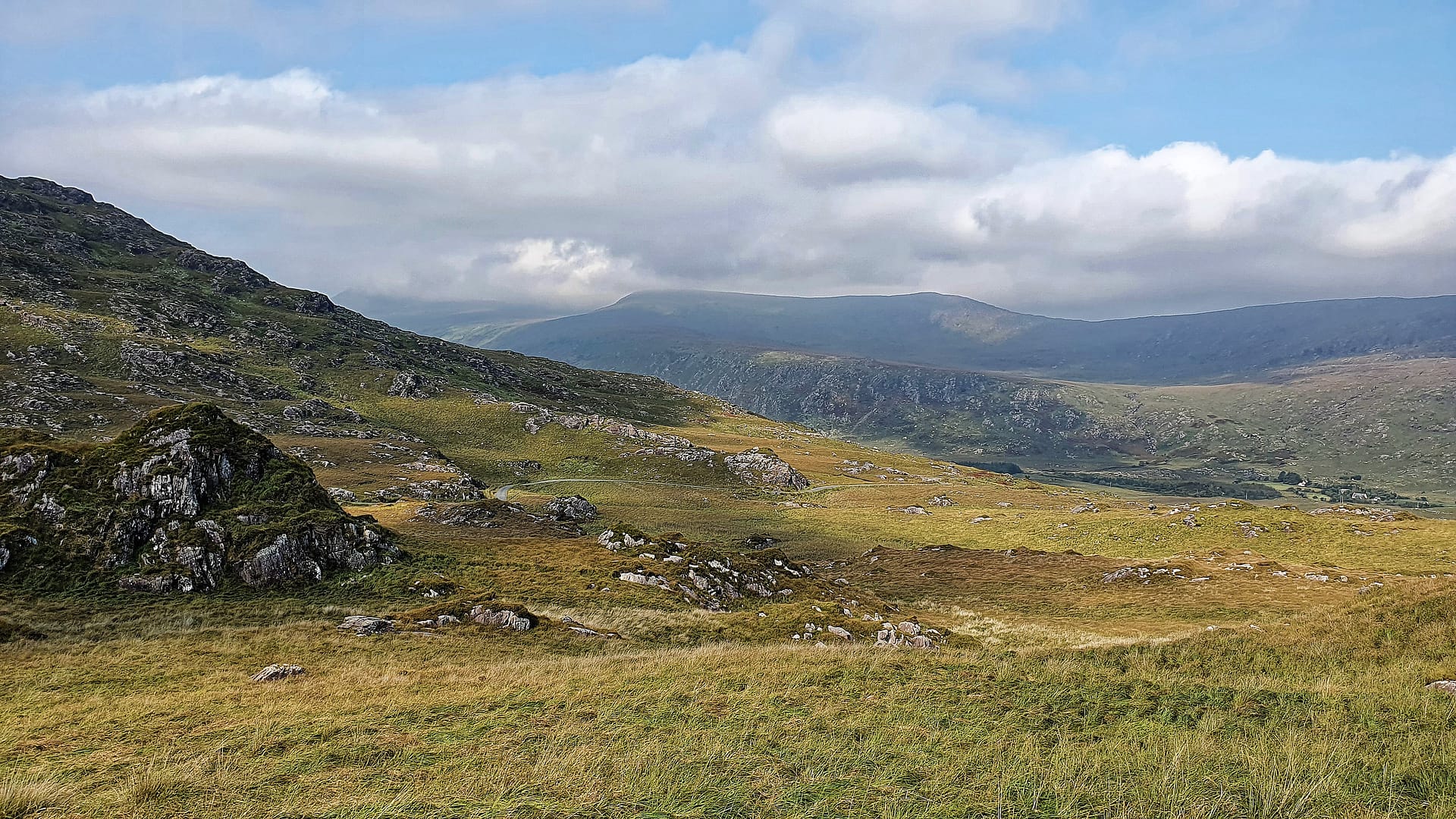
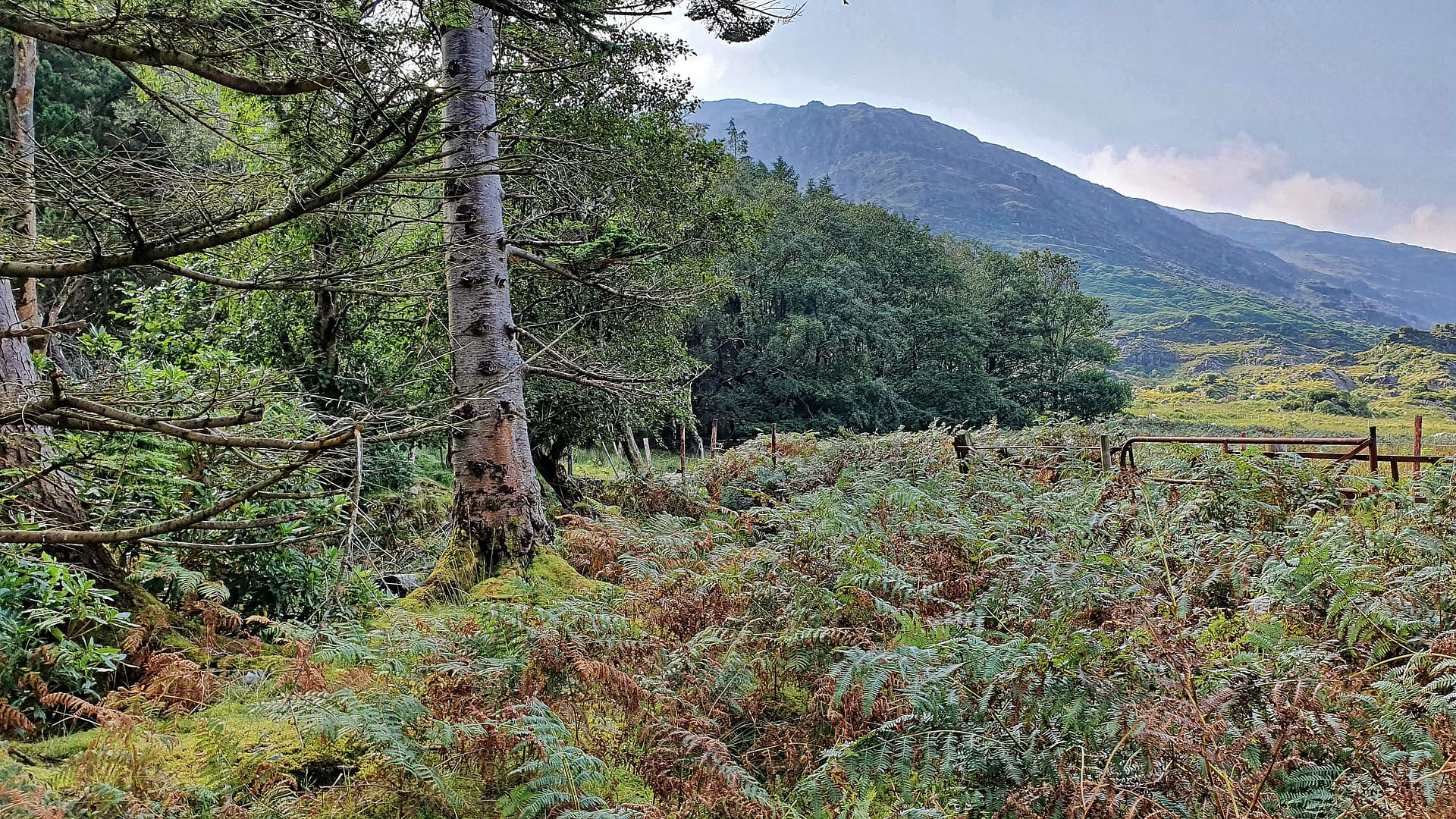
I took the picture above and the picture below at the place where we parked the car. Notice that the ferns are beginning to turn brown now in the fall. Also notice that the rhododendrons are beginning to bloom again! I love rhododendrons, which are native to Oregon where I lived for over 30 years. However, they are not native to Ireland. (They escaped from people’s gardens.) They are growing everywhere in the wild now and crowding out native trees and plants. Unfortunately, eradicating them is a slow and difficult process.
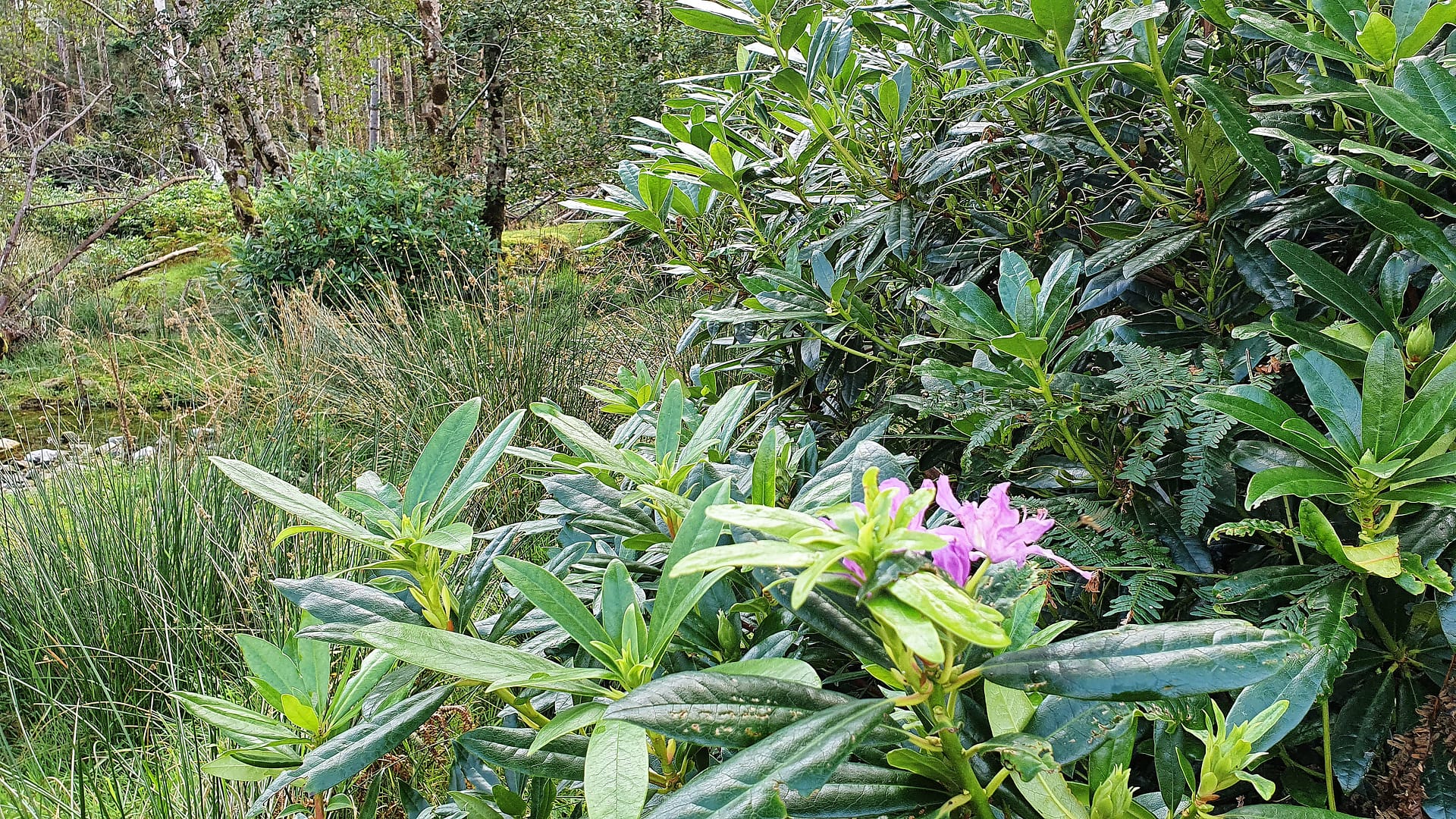
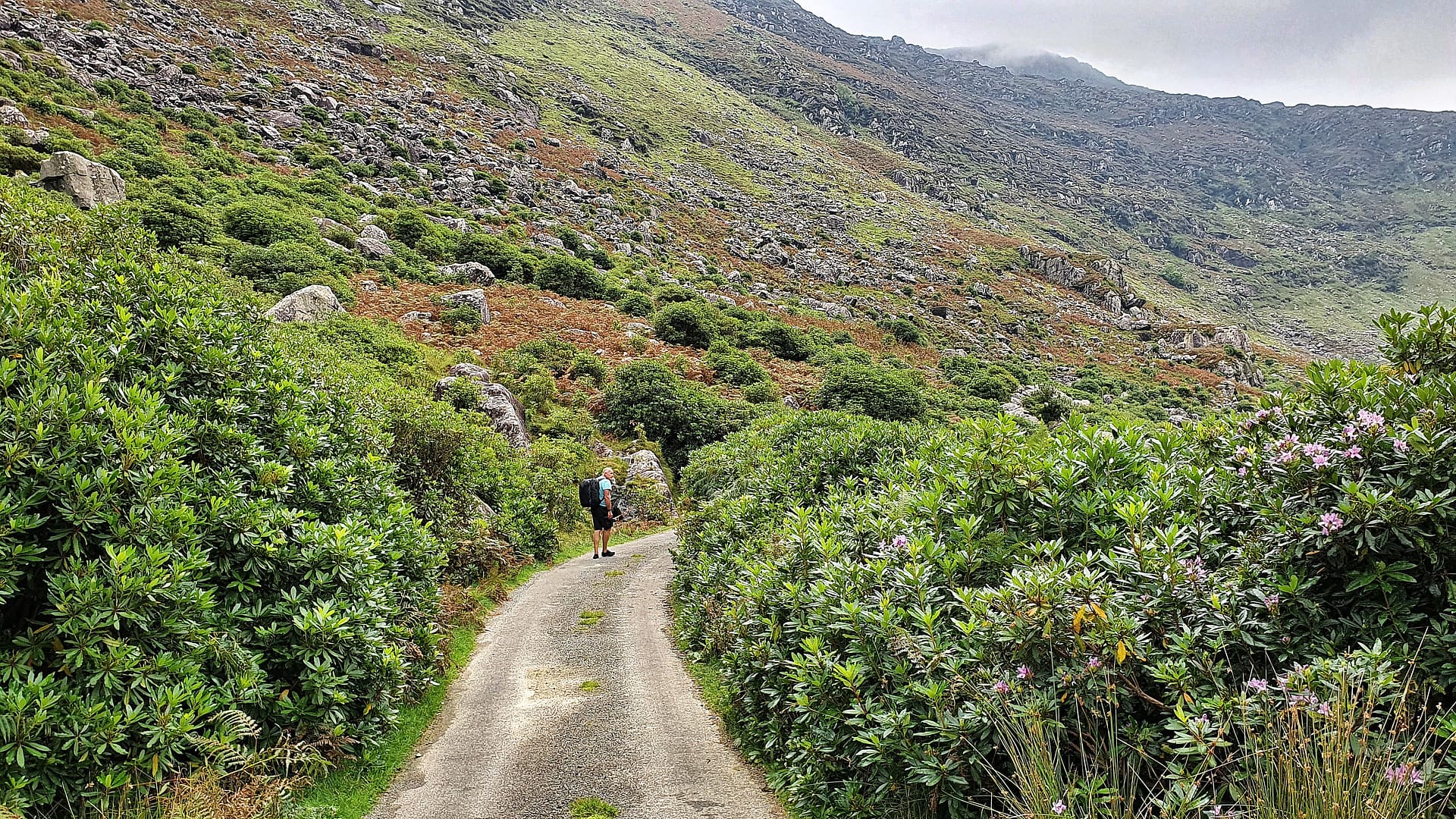
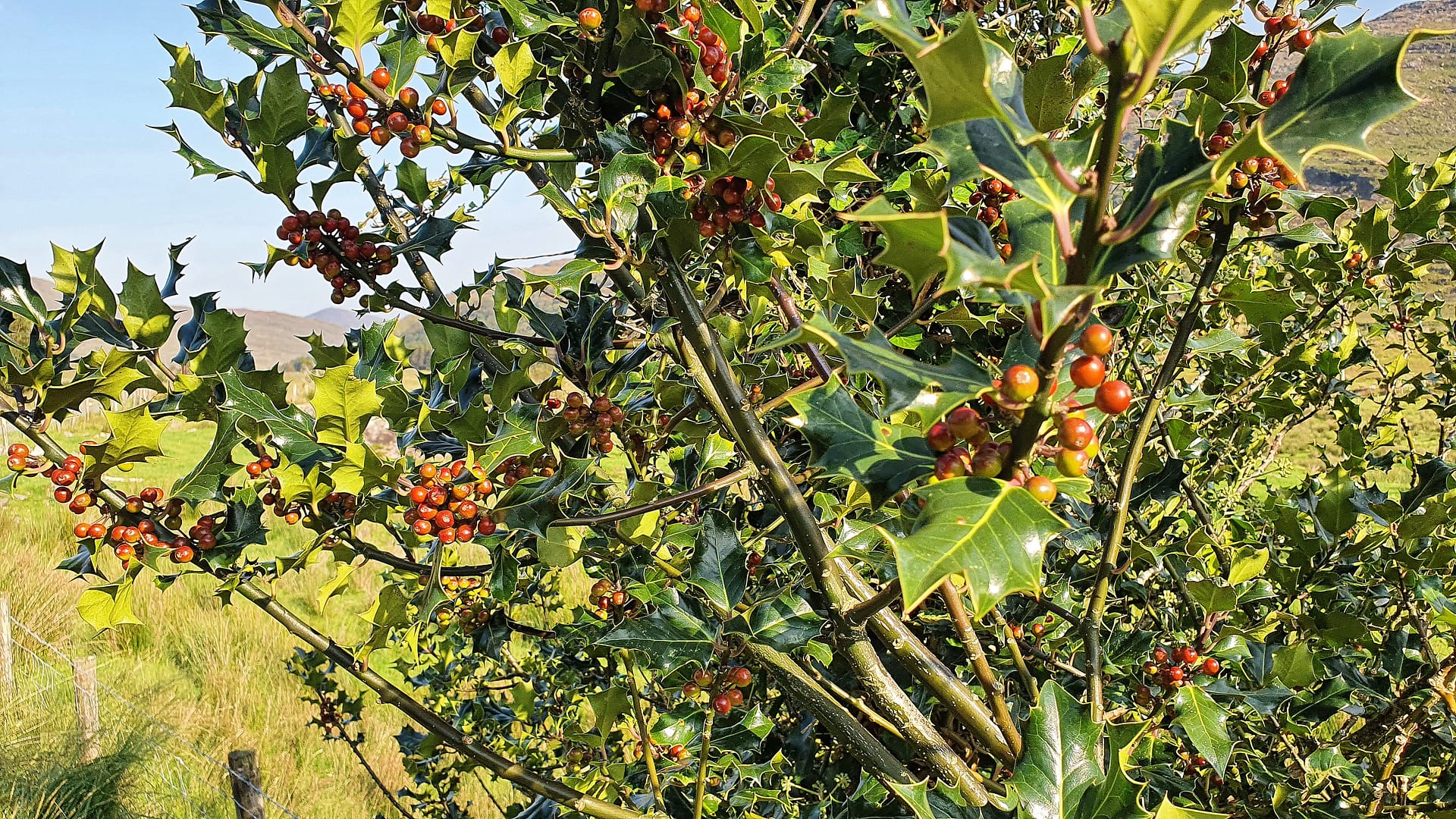
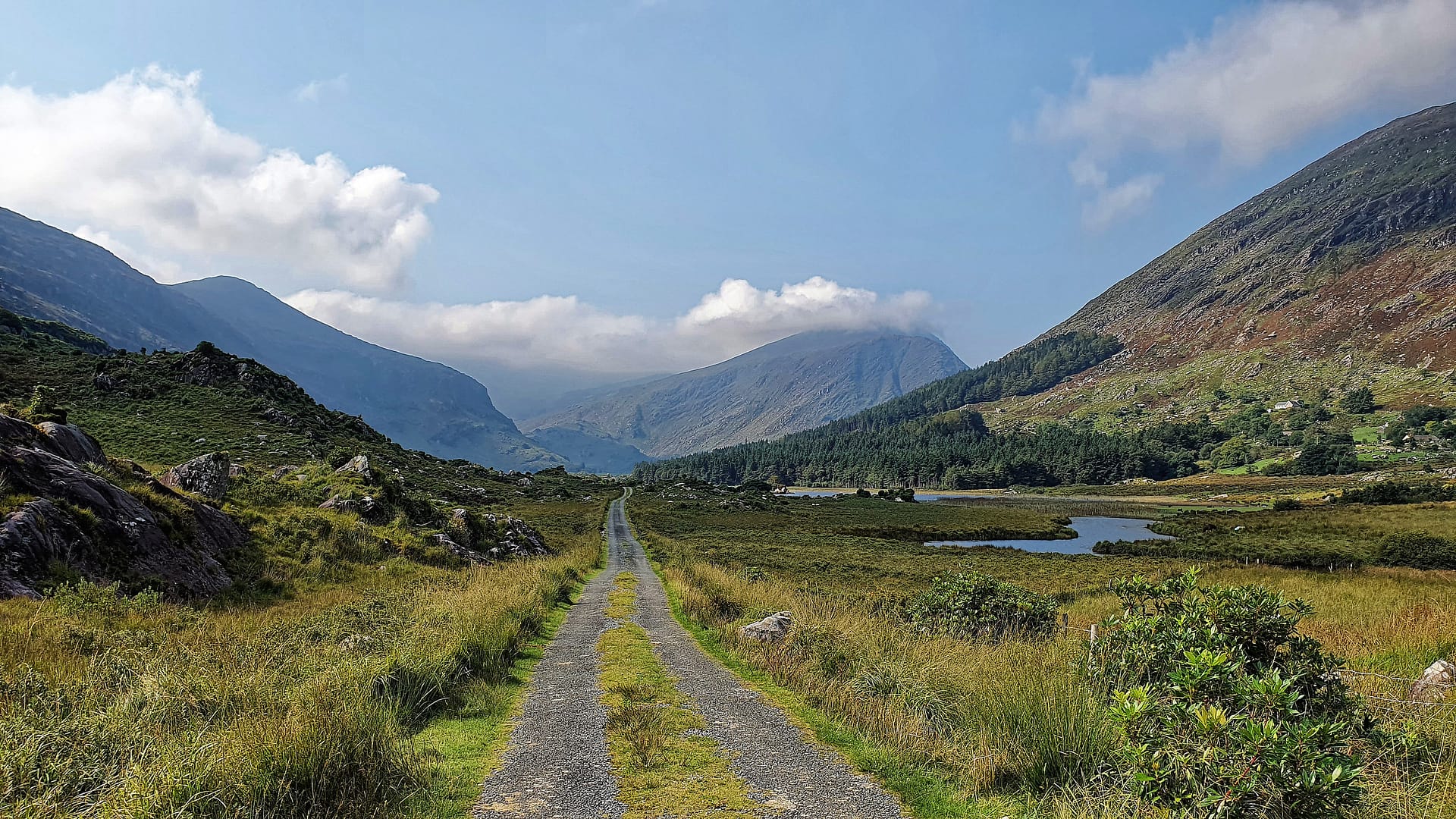
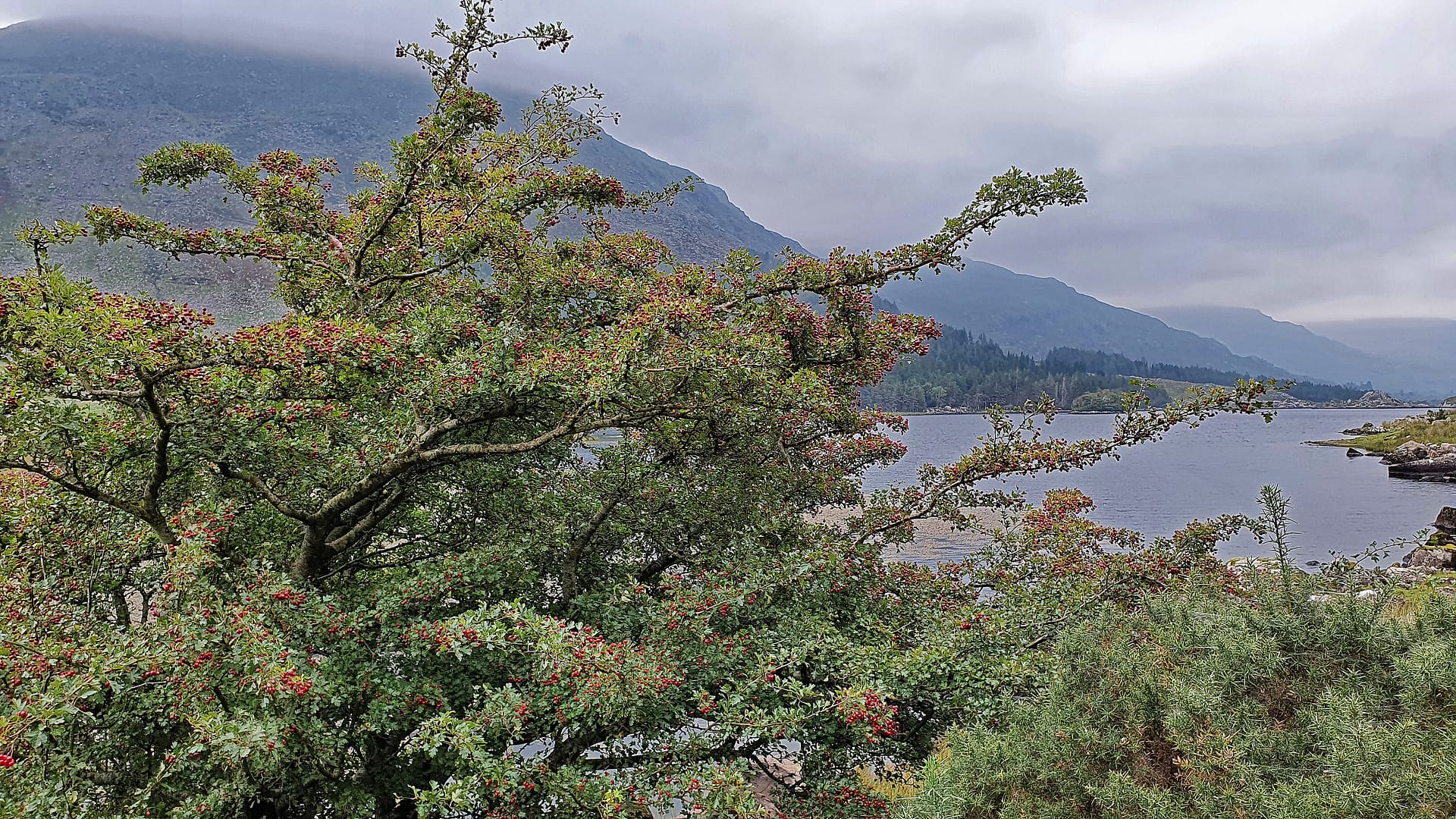
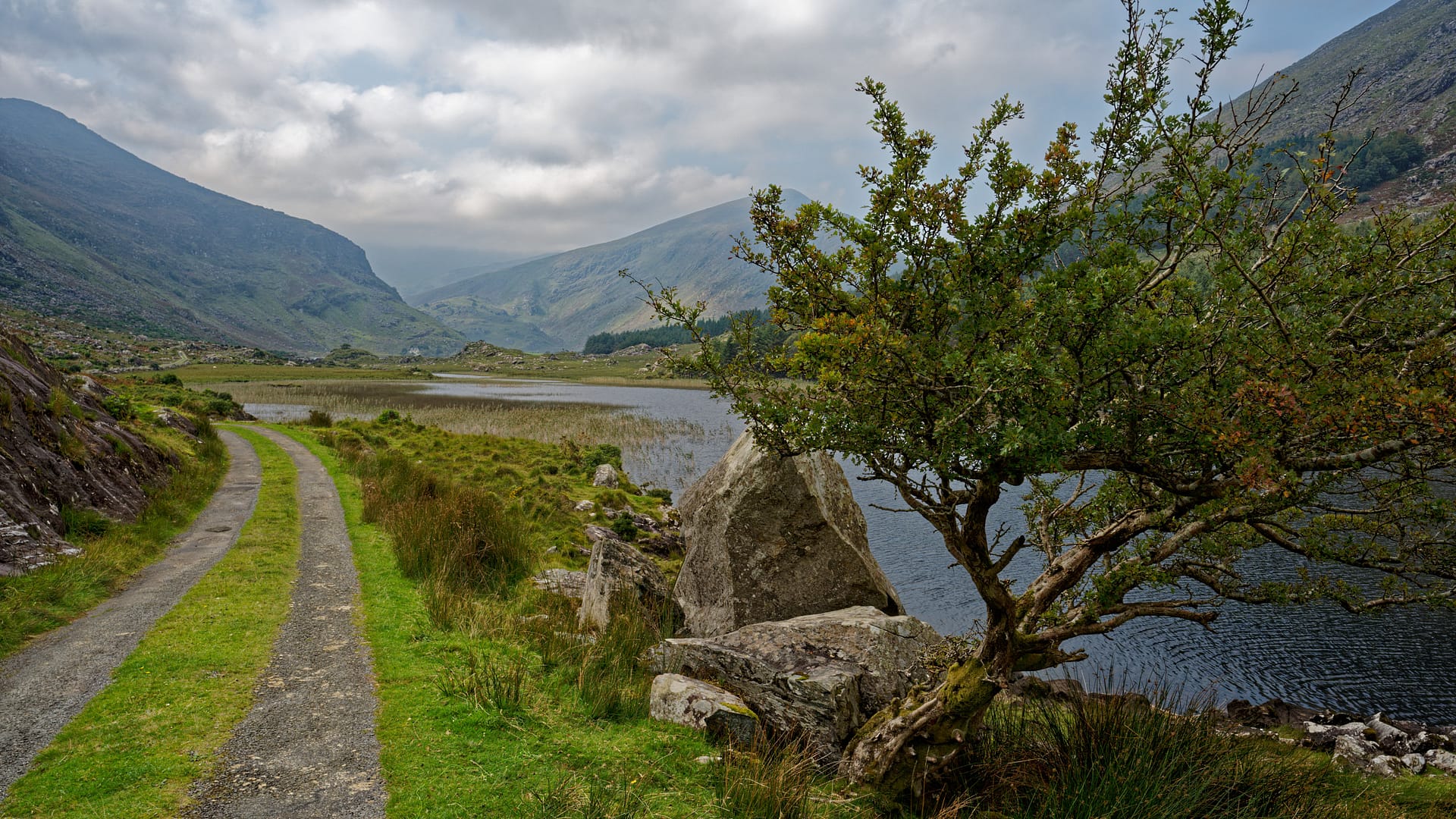
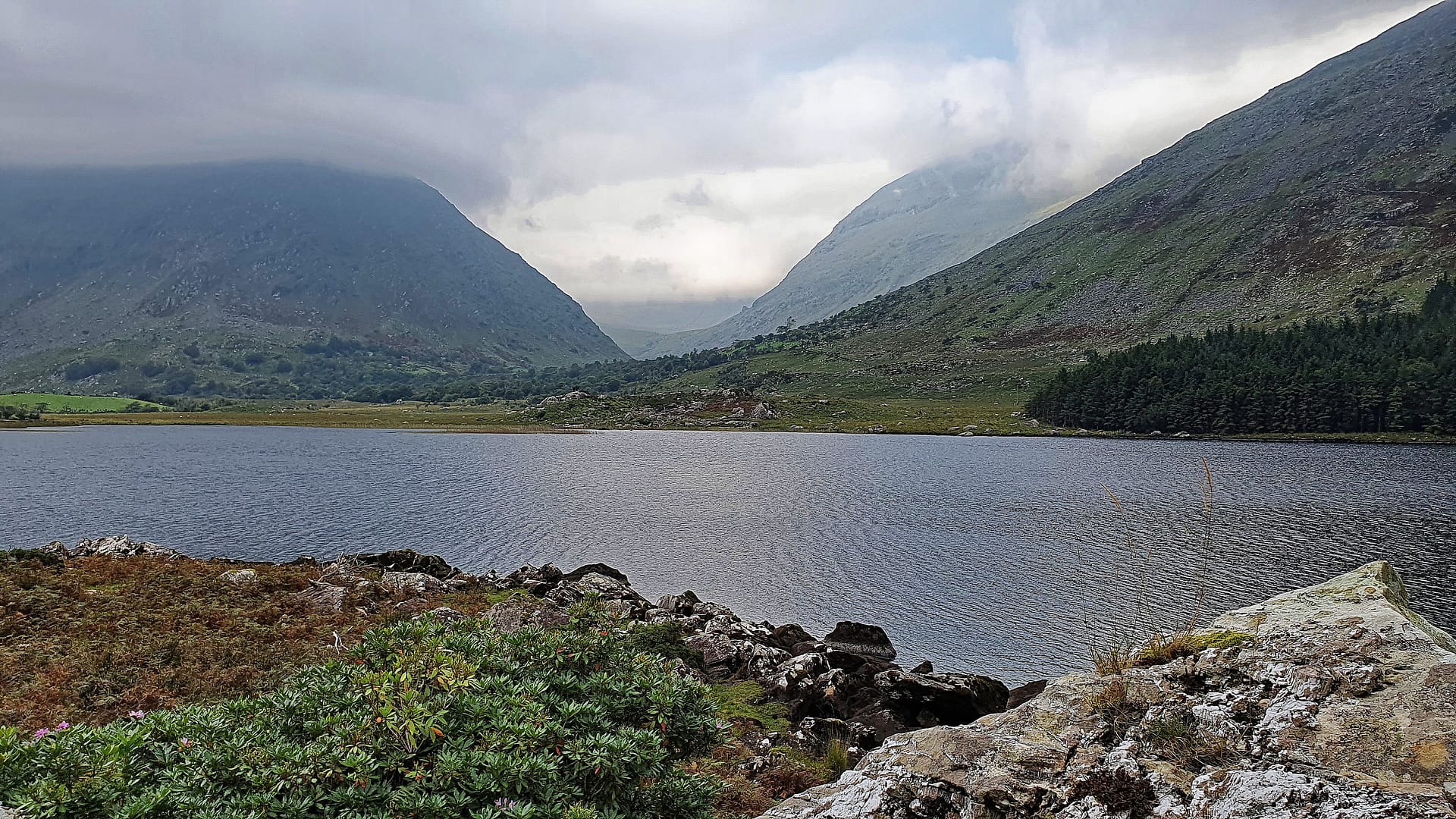
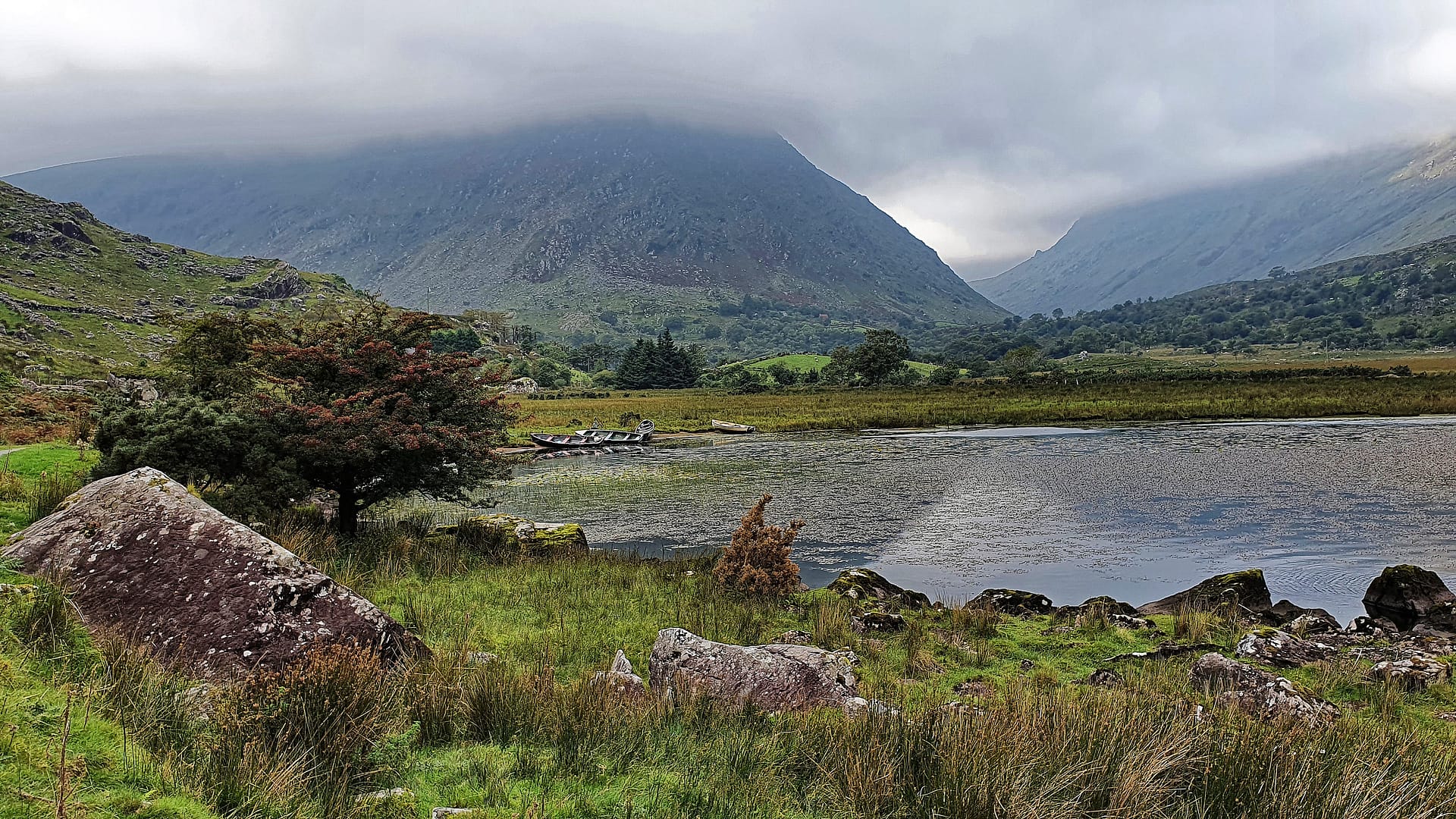
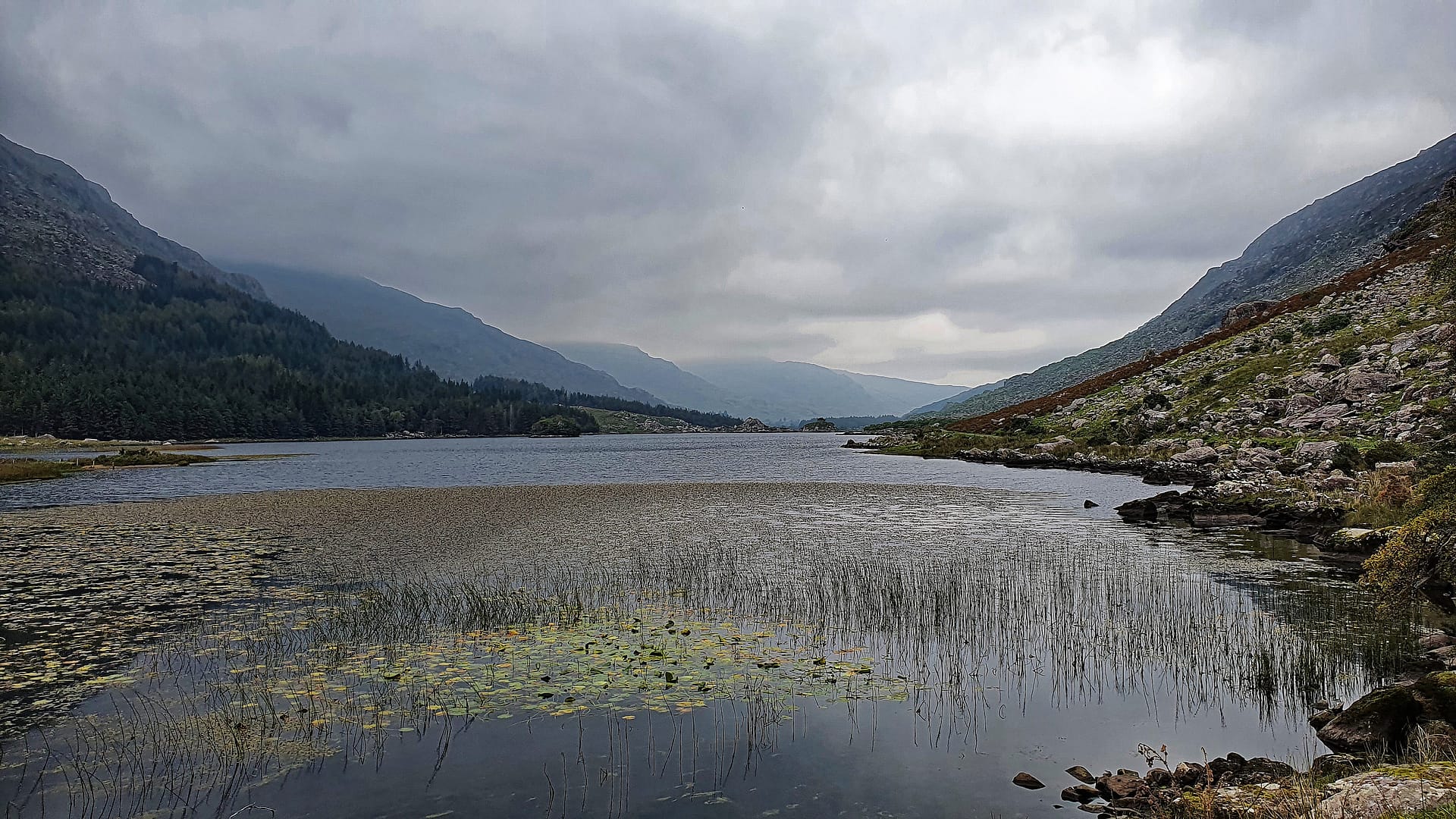
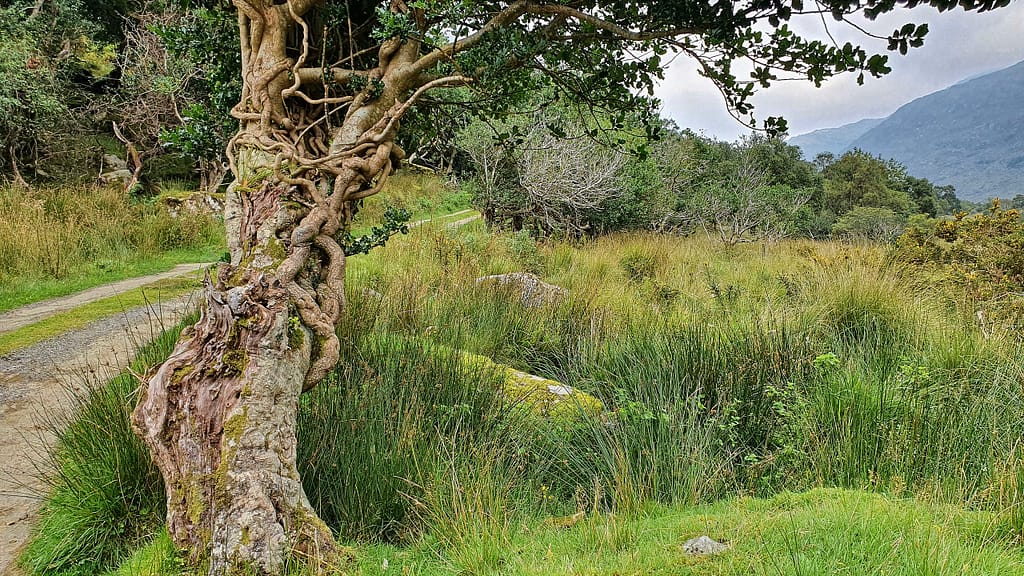
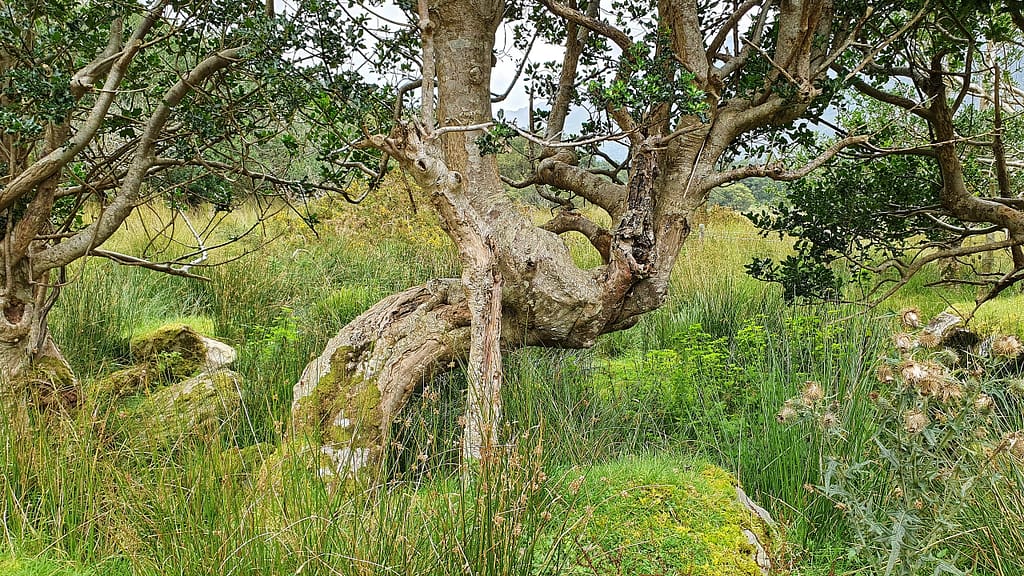
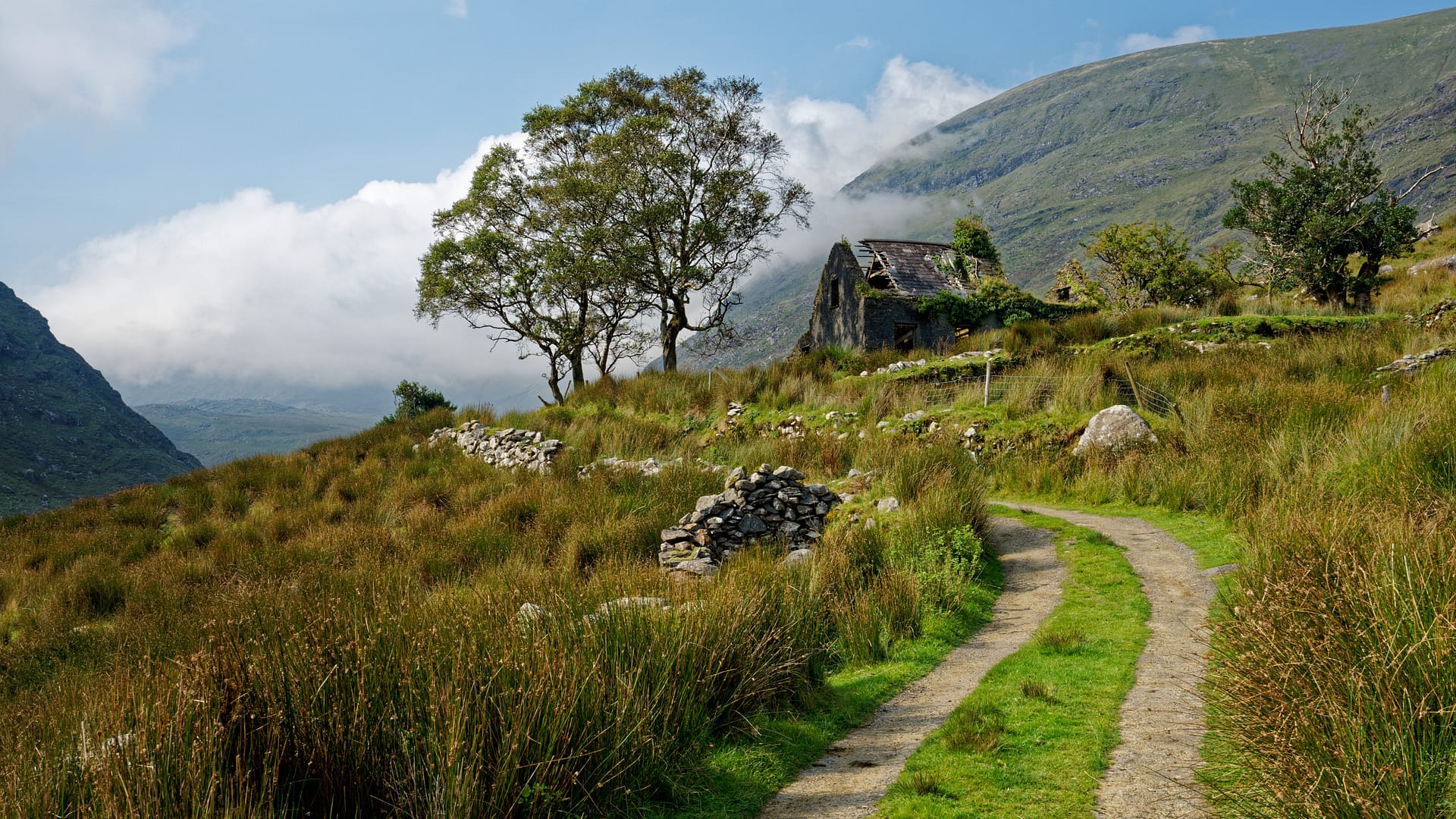
Kissane’s cottage has become an iconic, much photographed symbol of the valley. Also called ‘Dromluska Cottage’ after the name of the township in which it is located, I have not been able to find any information online yet about how old it is or when it was abandoned.
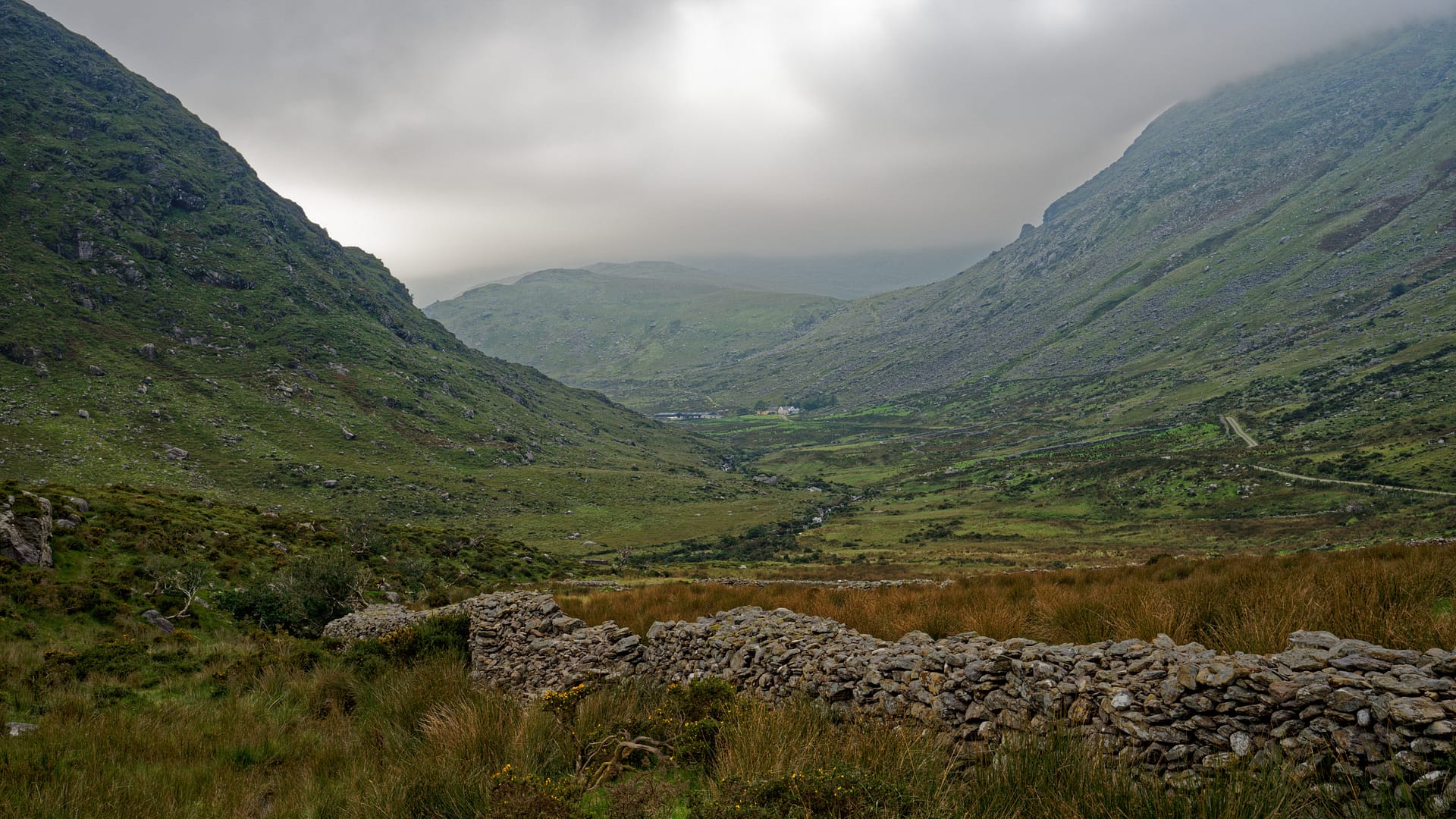
The Black Valley continues over the hill past Kissane’s cottage and down again, but this is where we decided to head east. Our maps show that there is an ancient stone row and some rock art on this side. They are likely located in farmers’ fields, however, so we would need permission to explore them.
The Cillín in the Black Valley
A plaque at the eastern end of the lake says that there is a Cillín at the west end of the valley. It explains that ‘Cillín’ means burial ground or little church and that it is an unconsecrated place where “un-baptised infants, suicides, strangers and other ambiguous people” are buried.
According to the plaque, the site of the Cillín in the Black Valley is located a short distance northeast of the meeting up of the Glashankilleen Stream and the Cummeenduff River. “It is made up of a raised rectangular area, 15 meters north to south by 19 meters east to west. The site has stone walls on three sides.
“The interior is occupied by several un-inscribed grave markers, among these are ten small mounds that are about 2.3 meters by 1.5 meters in size; these may cover graves.
“The Cillín in the Black Valley was used as a burial ground up until the early 20th century. NB the site is visible from the road but is not accessible to the public, as it is located on private land.”
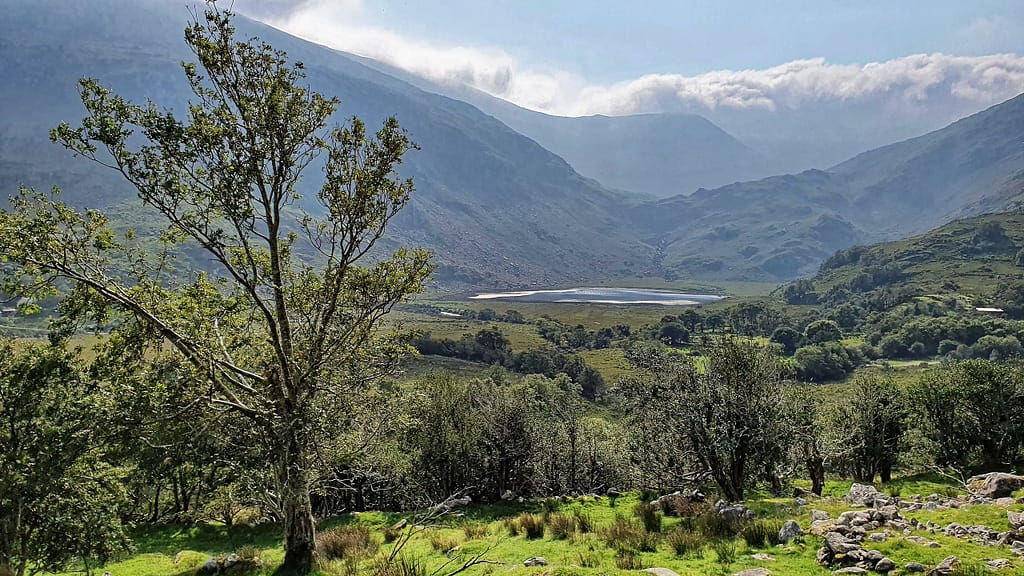
After leaving Kissane’s Cottage, we headed east following a path laid out for the Kerry Way. The route took us over a farmer’s field, through some boggy areas, and across stone and water-covered pathways. (So wearing some sturdy hiking boots here is a good idea.)
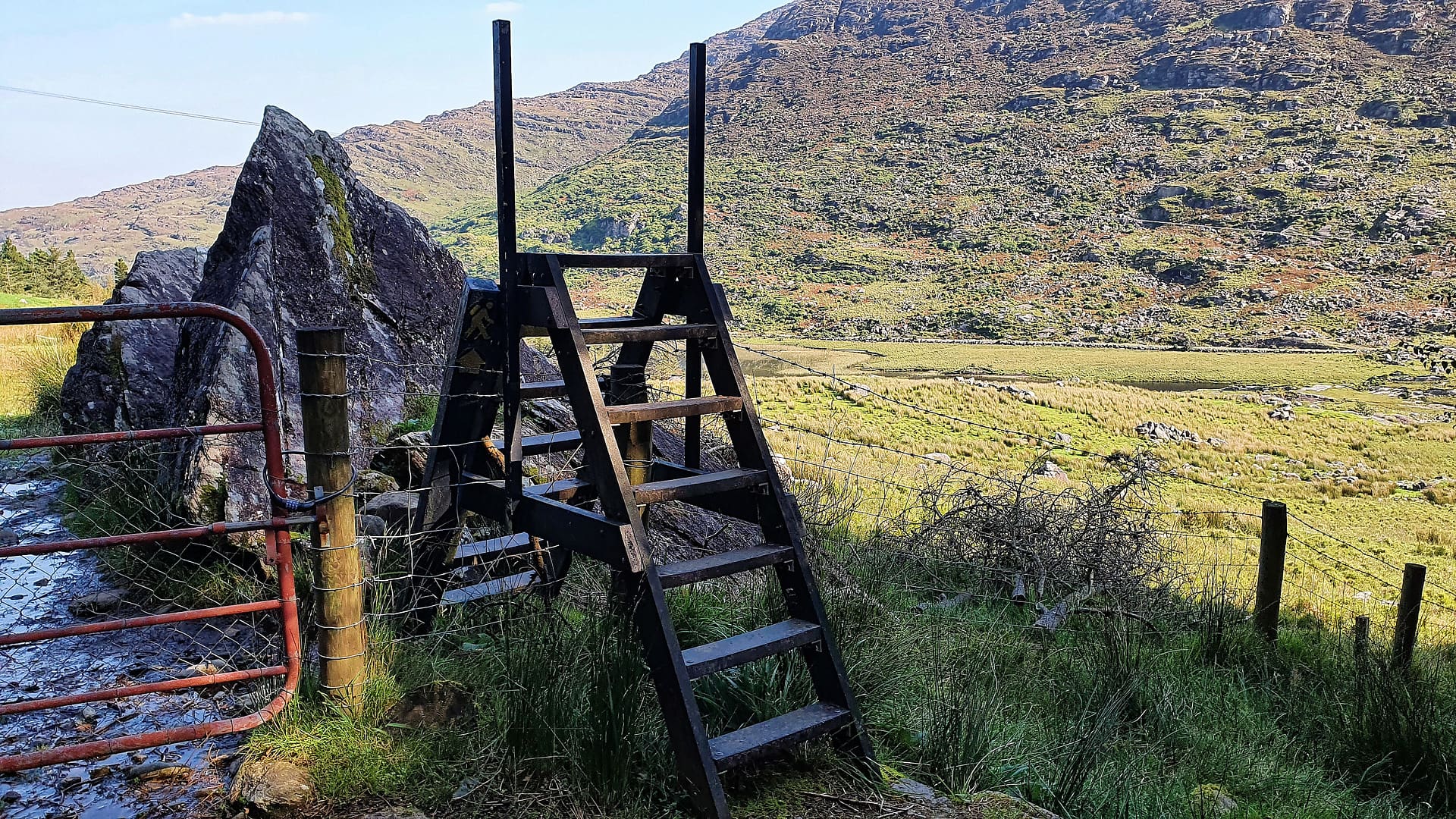
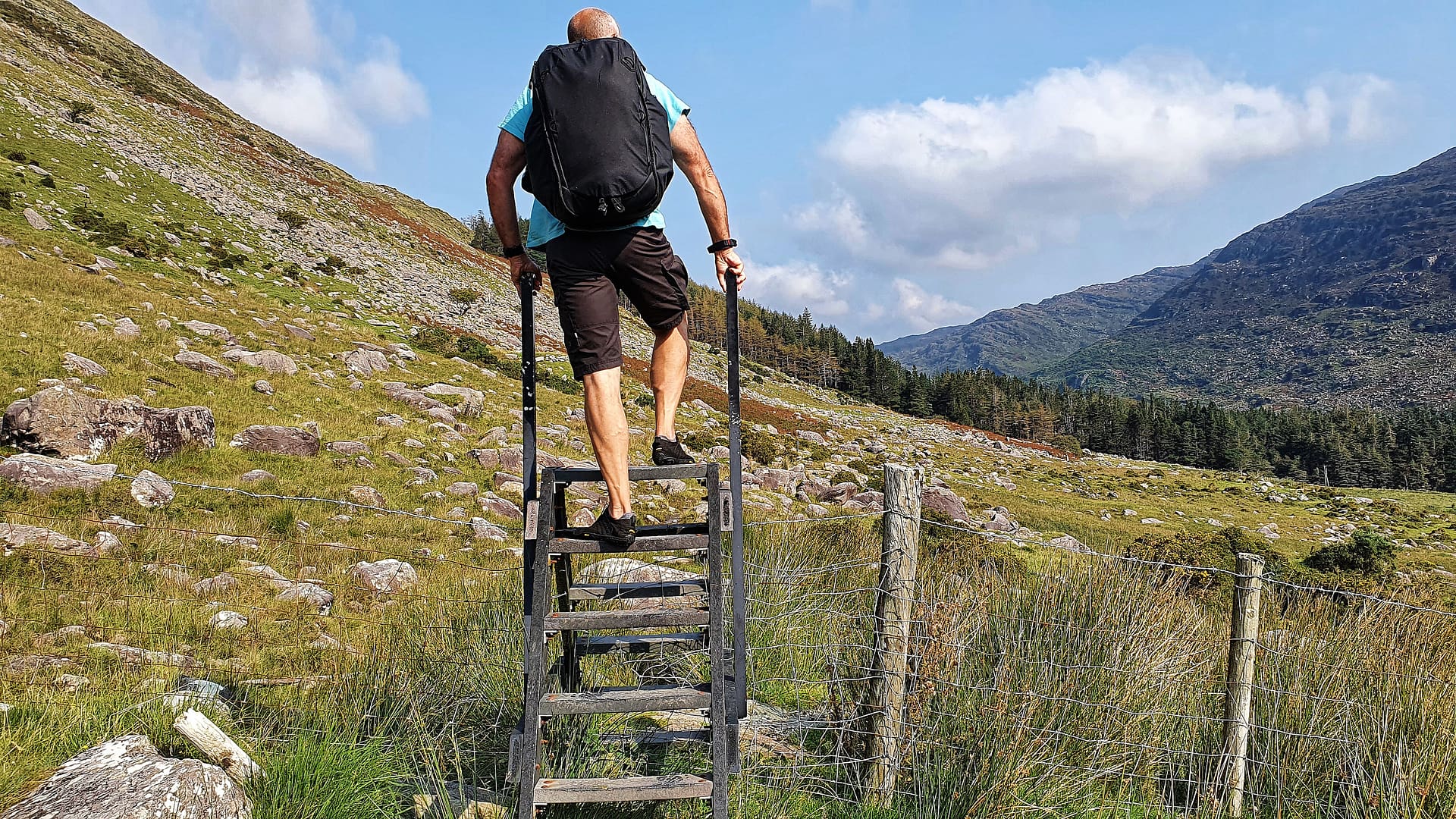
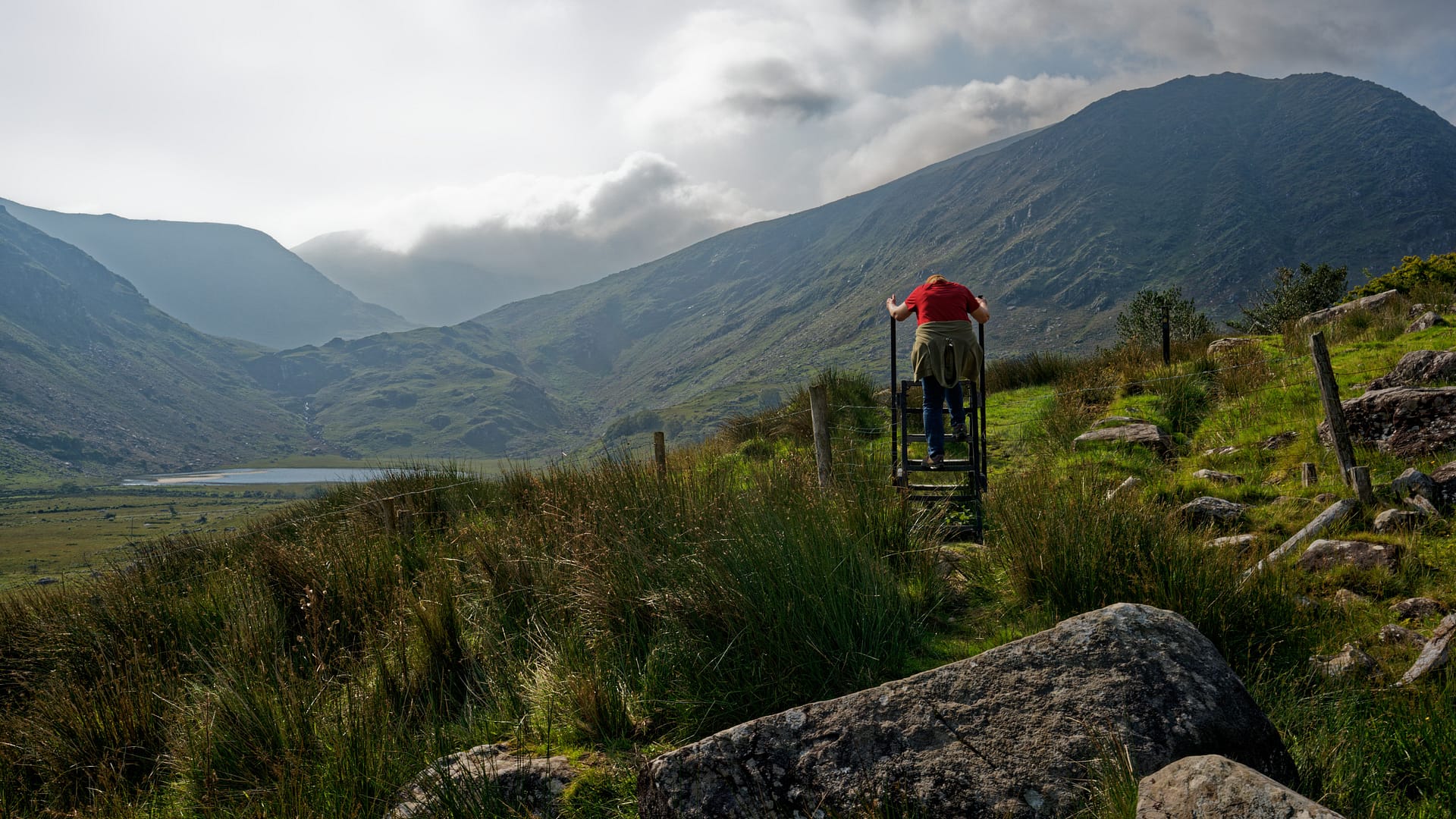
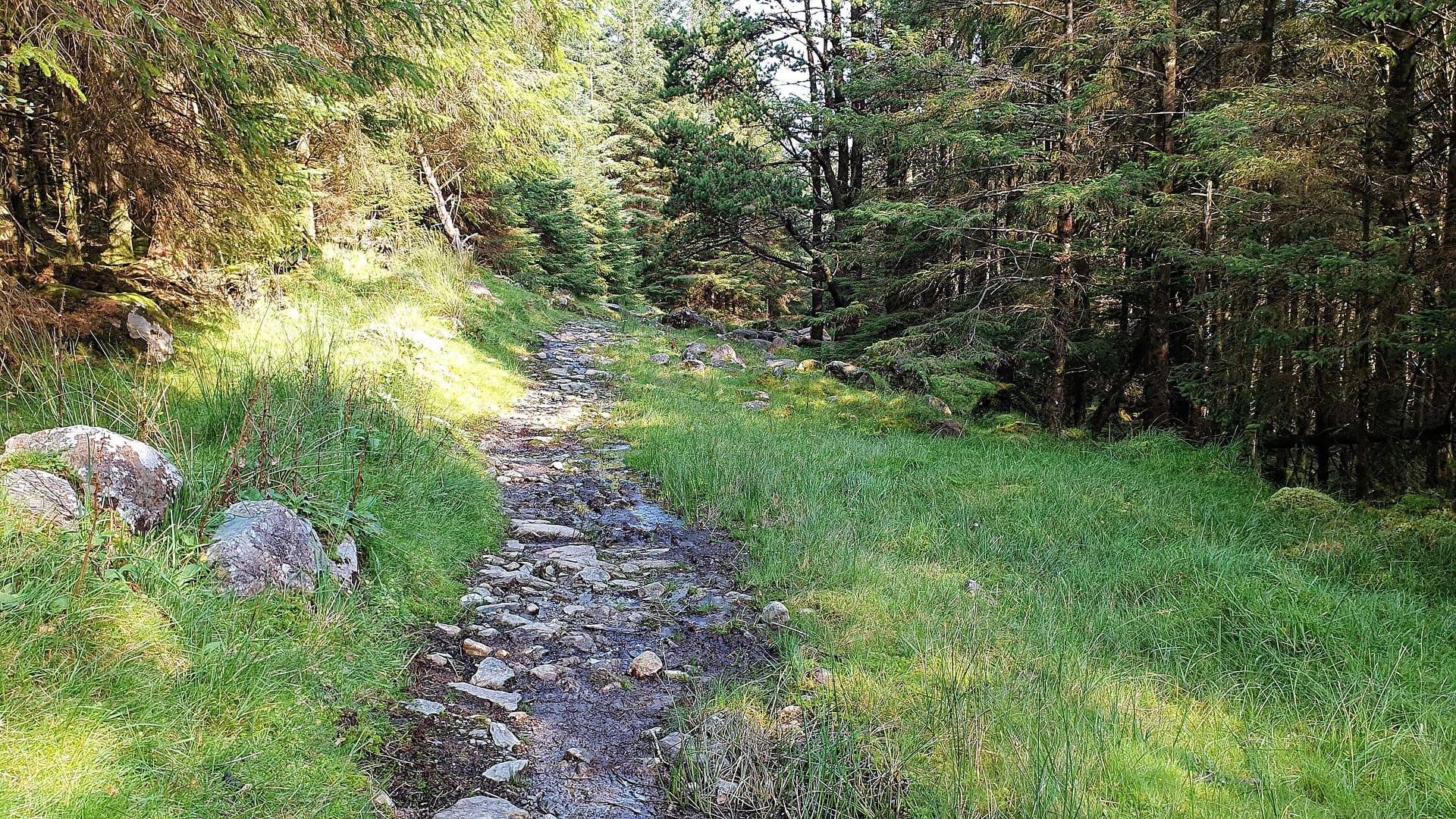
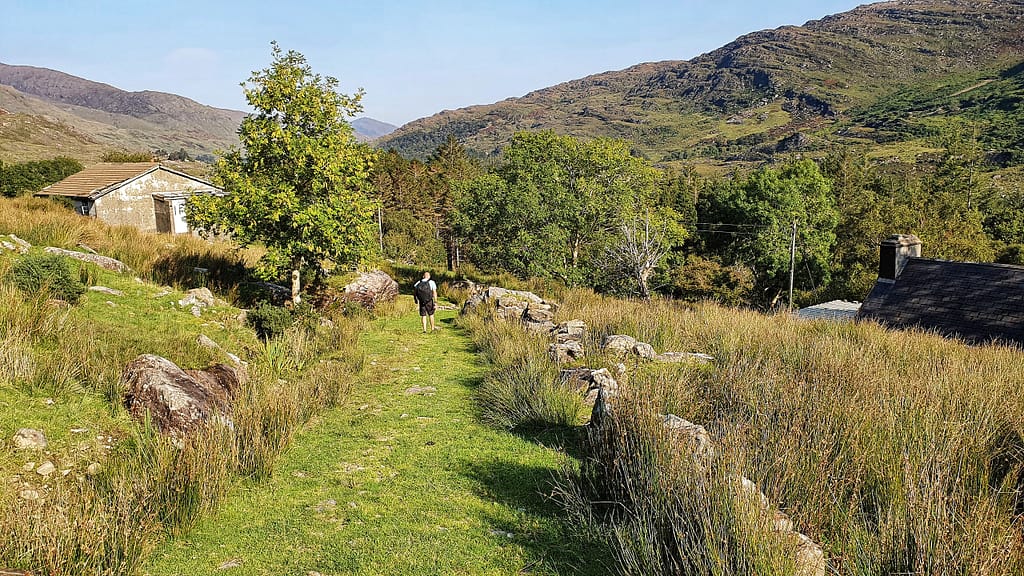
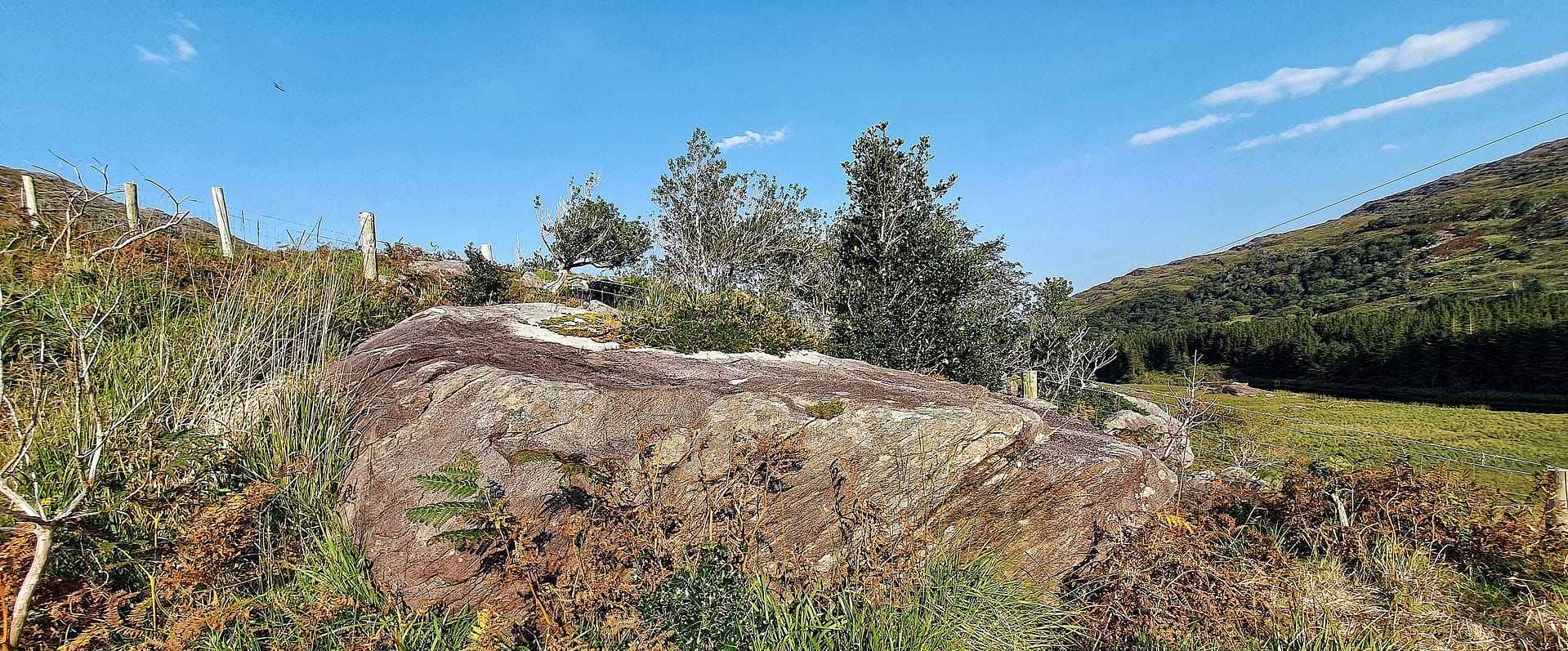
Carraig an Aifrinn
According to a plaque in front of it, this rock was used to celebrate mass for Roman Catholics during penal times. “Penal laws made it very difficult and perilous to celebrate mass. The religion was kept alive by secret open air masses.
“Catholic priests and worshippers had to find hidden areas in the Irish countryside to celebrate Mass; often with a good view of the surrounding areas. The one here in the Black Valley has a good vantage point as it would be easy to keep a look out on surrounding areas from the nearby hill on the road.
“In recent years mass has been celebrated here on a few occasions to keep the memory of the place alive.”
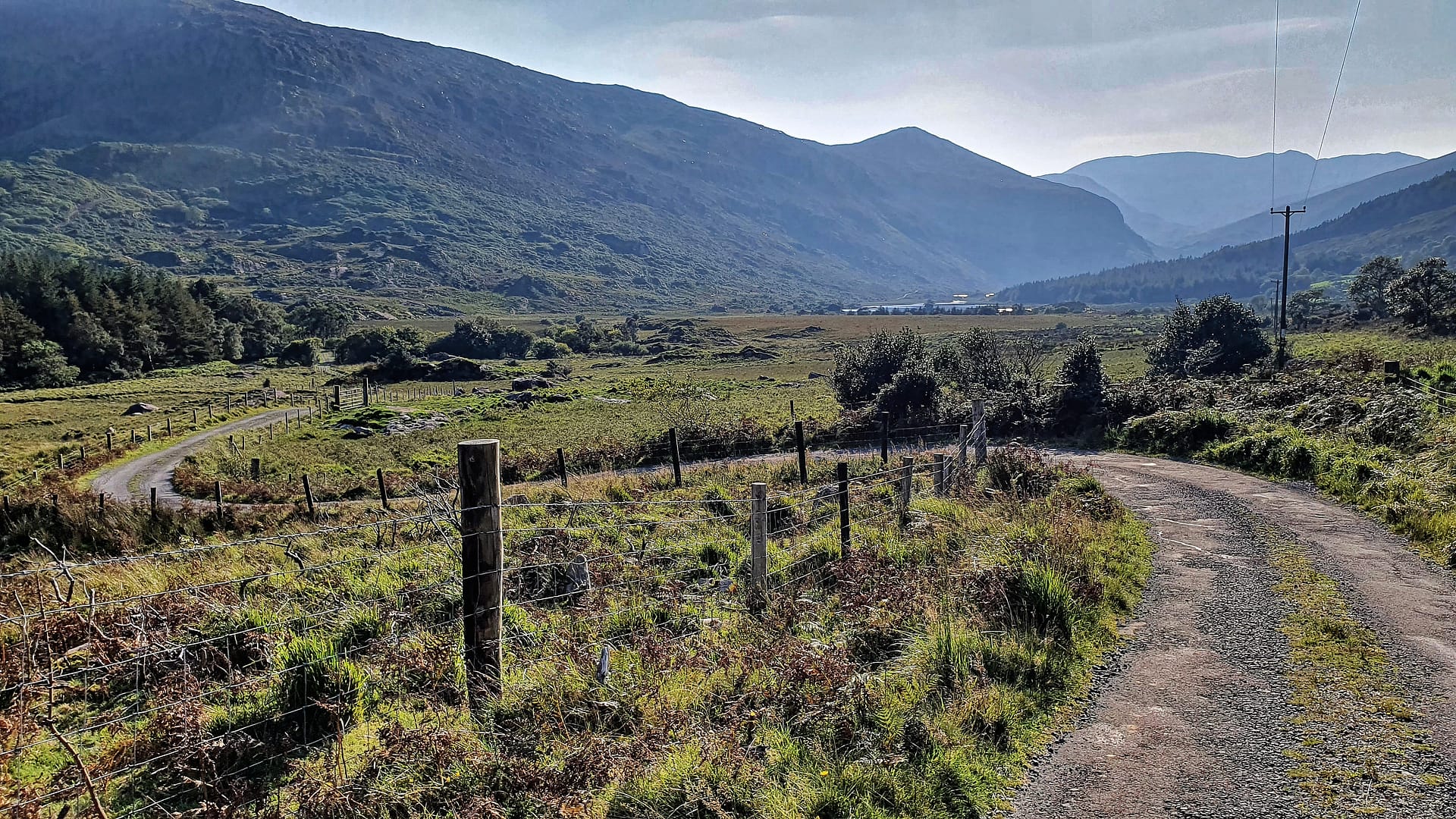
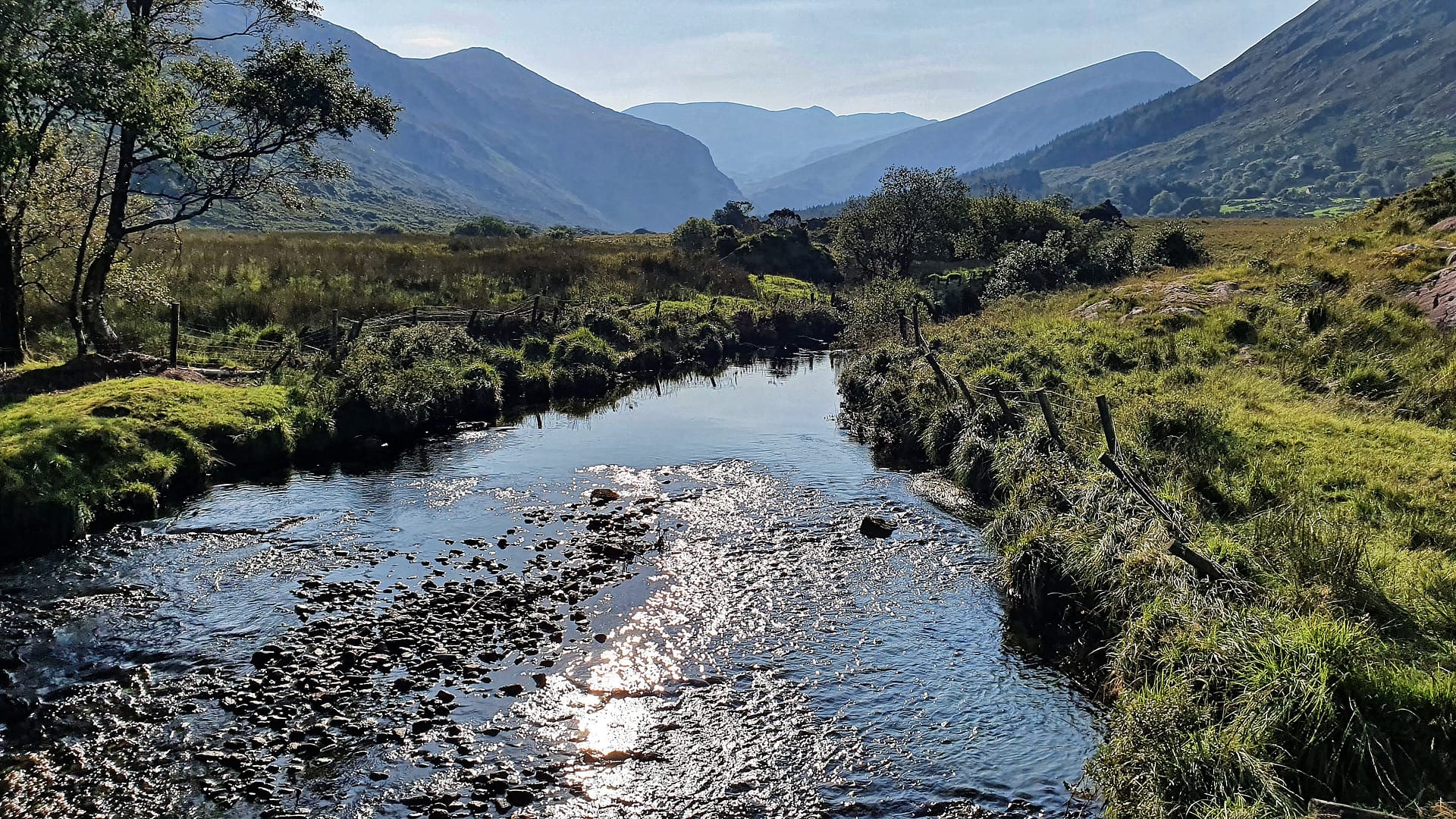
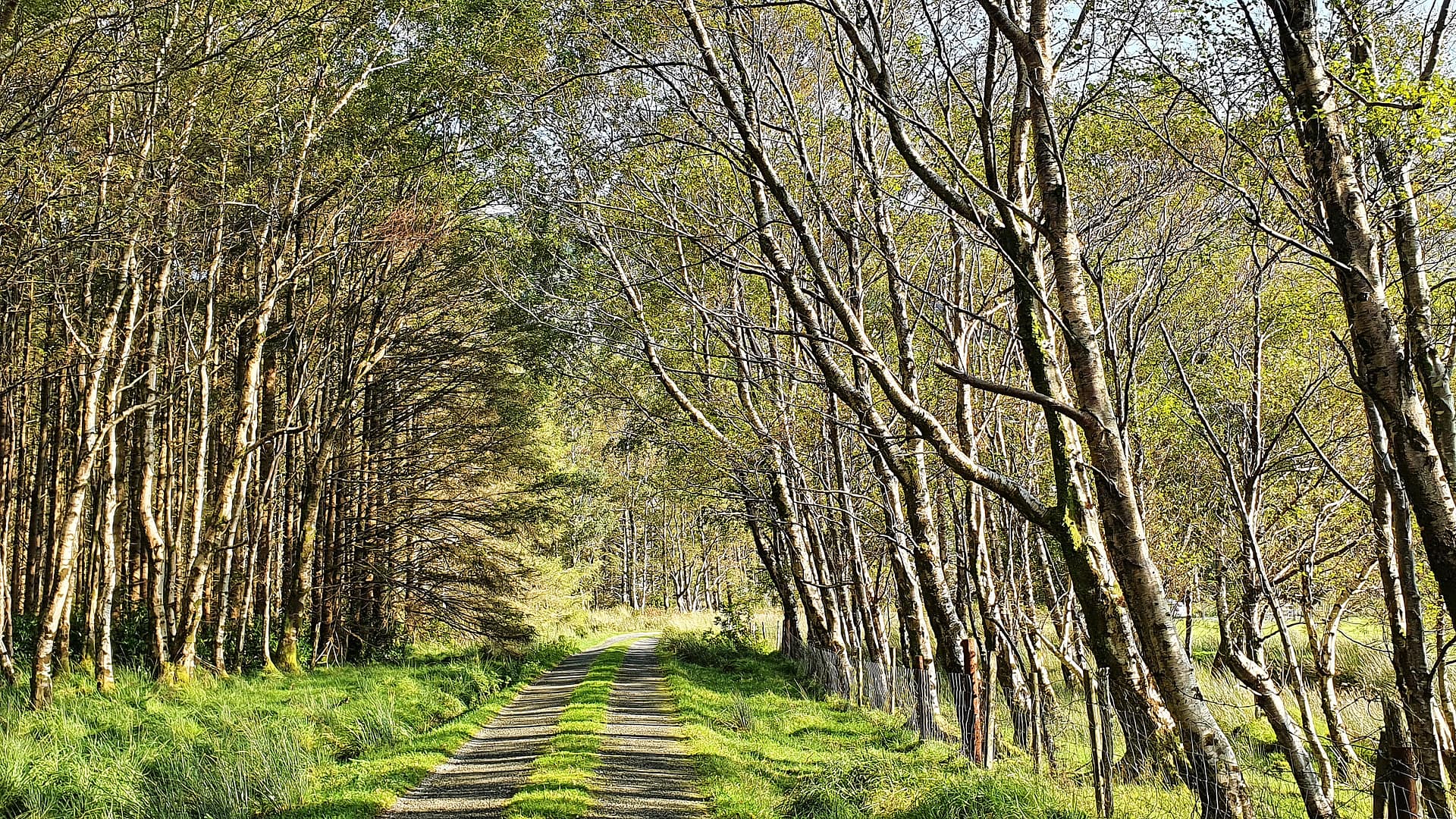
After an afternoon spent hiking though this magical place, both Gerhard and I felt happy and relaxed. I also felt very grateful for the opportunity (and the health) to go on such an adventure. We will definitely return.

Thank you, Janice. It really is a magical place.